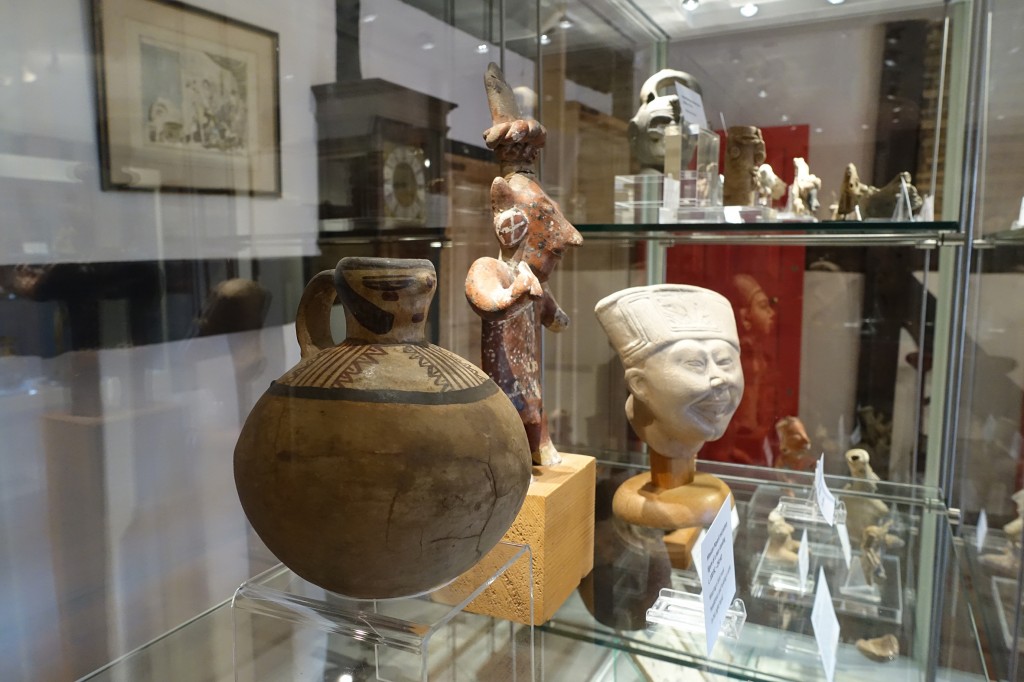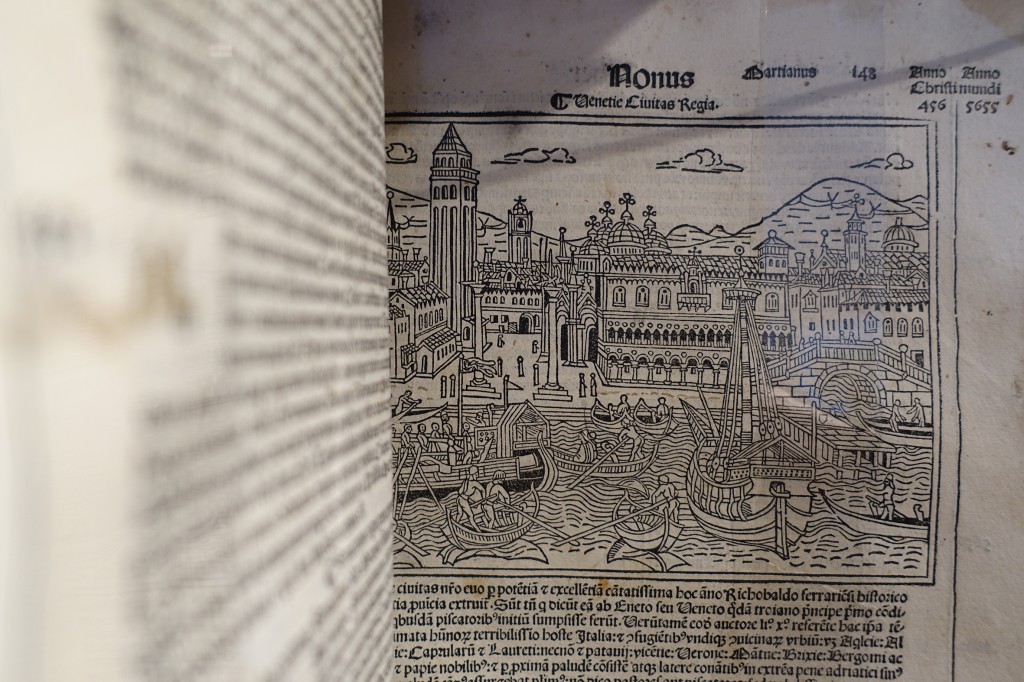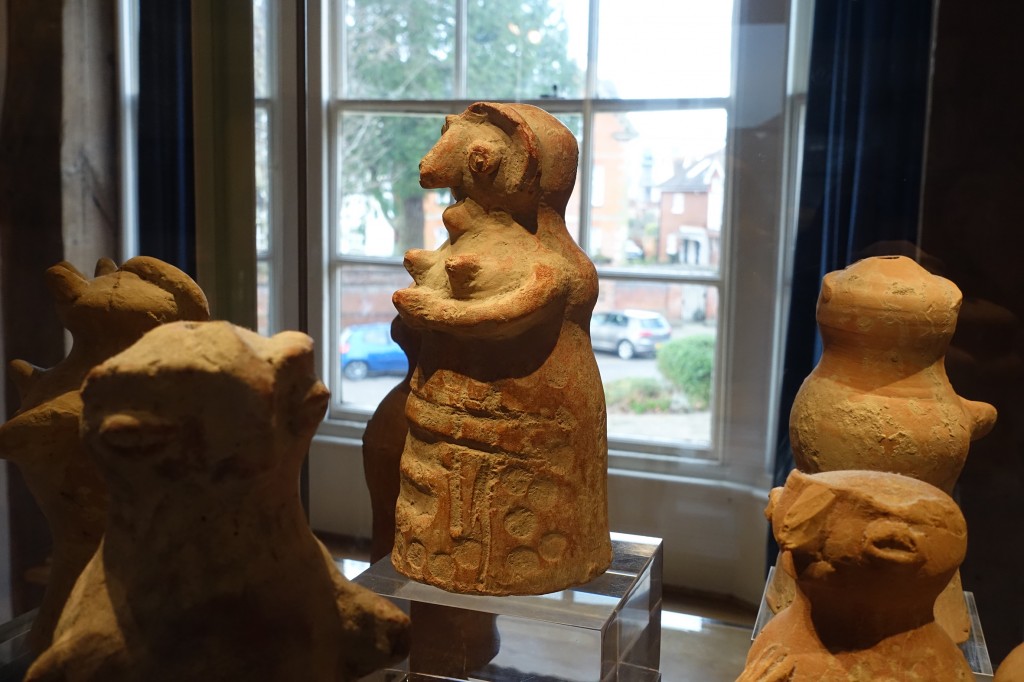
The latest exhibition at the Horsham Museum and Art Gallery, ‘Curiosity: A Tale of Quirky Collecting’, combines the delights of the Renaissance cabinet of curiosity with the enquiry of the 18th century Enlightenment. It charts the questioning journey of a 21st century Sussex antiquary. The objects form part of his private collection and have never before been seen together in public.
Between 1680 and 1820 the imaginations of some of Britain, Europe and America’s leading philosophers, scientists and writers were inspired by a new age of reason and learning which became known as the Enlightenment.
During the Renaissance rooms and cabinets of curiosities housed encyclopaedic collections of objects whose categorical boundaries were yet to be defined. They were often known as wonder cabinets and rooms. Similarly 18th century collectors, antiquaries and travellers brought together, but also sought to classify, objects from the world around them. Many of these objects were categorised according to the seven major new areas of enquiry during the Enlightenment. These included: natural history, art and civilisation, religion and ritual, the birth of archaeology, discovery and trade, the translation of ancient scripts and classification.
These areas of enquiry are abundantly displayed in this exhibition’s cabinets of curiosity filled with wonder and learning at the Horsham Museum. The objects’ stories are bound together with their custodian’s very personal journey of discovery through collecting.

The story begins with geology. Encouraged by his mother, when 11 years old, he began to collect geological specimens. He would eventually amass more than seven hundred examples. From geology we move to the natural world and a Christmas gift of an antique taxidermy red squirrel given to our enlightened collector as a boy of fourteen. And then to books, not just as documents of learning but as aesthetic objects, like the ‘Chronicle of the World’ seen here which was published in 1493. It is an incunabula, a term given to any book which was printed rather than handwritten before 1501. It means cradle of printing. The printed words seem to lead us into the marvellous woodblock illustration which depicts a bustling harbour filled with trading ships and a city beyond. I share this collector’s fascination with books. They have been collected for millennia. The libraries of the ancient world must have been wondrous.
This gifted antiquarian writes how one day, feeling flush, he purchased a Chinese Han Dynasty (206BC to 220AD) pottery figure from a shop near the British Museum in London and his journey of discovery through antiquities began.

There are some truly ancient objects in this exhibition. Look at the remarkable group of ten terracotta figurines from the Indus Valley which date from between 3000BC and 2000BC. It is thought that might they might be emblematic of fertility. The Bronze Age, Harrappan Civilisation (3300BC to 1900BC) of the Indus Valley extended from what is now northwest India through Pakistan to northeast Afghanistan. It flourished on the banks of the Indus River. This important civilisation was lost in the mists of time until it began to be rediscovered during the Archaeological Survey of India instigated by the British Raj in 1861. There is something remarkable in these figures being displayed against the backdrop of Horsham’s Causeway.
Alongside objects from Europe, the Indus and China are pieces from the ancient Aztec, Inca and Mayan civilisations of South America. These include the Picasso like Peruvian Chimu effigy vessel painted with a face and geometric collar which dates from between 1100AD and 1450AD. Beside it is a marvellous Mexican Nayarit red pottery figure wearing a bird headdress. It dates from 100BC to 250AD. The Mexican pottery Veracruz head, circa 400AD to 800AD, has wonderfully expressive features.
The romance of history and a curiosity about the past is often bound up with the joy of owning and observing objects. I love the qualities of an enquiring and learning journey expressed in this very personal exhibition of eclectic items. The displays in these wondrous cabinets of curiosity and discovery give us an insight into how human achievement has evolved over the centuries. They allow us to glimpse the 18th century age of Enlightenment’s spirit of enquiry which, it would seem, is alive and well in 21st century Sussex!
‘Curiosity: A Tale of Quirky Collecting’ runs until 5th March 2016, at the Horsham Museum & Art Gallery, The Causeway, Horsham, RH12 1HE. Entrance to the Museum and exhibition is free. It is the perfect half-term outing! For more information go to www.horshammuseum.org or telephone 01403 254959.
By Rupert Toovey, a senior director of Toovey’s, the leading fine art auction house in West Sussex, based on the A24 at Washington. Originally published in the West Sussex Gazette.